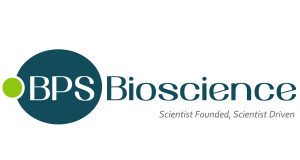FcRn: IgG or HSA Inhibitor Screening Chemiluminescent Assay Kit
FcRn: IgG or HSA Inhibitor Screening Chemiluminescent Assay Kit
SKU
BPS82786
Packaging Unit
96 rxns.
Manufacturer
BPS Bioscience
Availability:
loading...
Price is loading...
Products from BPS Bioscience require a minimum order value above 400€
Application: Screen or titrate neutralizing antibodies or blockers of FcRn binding to HSA, or Fc(IgG1) binding to FcRn, in high throughput screening (HTS) applications.
Background: Neonatal Fc receptor for IgG (FcRn) is a heterodimeric protein consisting of the Fc Gamma Receptor and Transporter encoded by the FCGRT gene, associated with beta-2-Microglobulin (B2M). FcRn binds to the Fc region of monomeric immunoglobulin G (IgG). It is expressed in over 25 tissue types, with high expression levels observed in the spleen and intestine. In the placenta, it transports IgGs from mother to fetus. FcRn contributes to an effective humoral immunity by protecting IgGs from degradation, recycling them and extending their half-life in circulation. In addition to IgGs, it regulates the homeostasis of serum albumin. The function of FcRn can be exploited by engineering therapeutic antibodies to increase their binding to FcRn, thereby improving their half-life and therapeutic efficacy. For example, an antibody cocktail that contains Fc mutations and an extended half-life (Evusheld) is used to treat COVID-19. The first-in-class drug, Enbrel, a TNF-alpha/Fc fuses Fc portions to a therapeutic protein to increase their half-life. There are now several other drugs in clinical using similar strategies. Conversely, FcRn is a potential therapeutic target for autoimmune diseases. Disrupting the FcRn/IgG interaction is expected to increase the overall clearance of IgGs, including disease-causing autoantibodies. Engineered Fc fragments or neutralizing IgGs that bind to FcRn with high affinity through their Fc region are currently undergoing clinical trial. The first FDA-approved drug targeting FcRn (efgartigimod) is now used to treat myasthenia gravis, an autoimmune neuromuscular disease caused by the presence of autoantibodies against acetylcholine receptor, providing proof-of-concept in favor of this strategy.
Contraindications: DMSO concentration in the final reaction should be ≤1%.
Description: The FcRn: IgG or HSA Inhibitor Screening Chemiluminescent Assay Kit is designed for screening and profiling biologics targeting the interaction between human FcRn (Neonatal Fc receptor for IgG) and Human Serum Albumin (HSA) or between human FcRn and human Fc (IgG1), respectively. This kit comes in a convenient 96-well format, with enough Fc (IgG1) (amino acids 100-330), Biotinylated HSA and His-tagged FcRn (FCGRT/B2M) (amino acids 24-297 of FCGRT and 21-119 of B2M), as well as anti-His detection antibody, Streptavidin-HRP, and assay buffers for 100 reactions.Figure.1 Assay principleThis universal assay kit provides flexibility as it allows to choose between two protocols for profiling biologics targeting the Fc(IgG1):FcRn or FcRn:HSA interactions, respectively. Protocol A: Fc (IgG1) is coated on a 96-well plate overnight. The plate is incubated with an inhibitor or neutralizing antibody together with FcRn, washed, and treated with anti-His detection antibody to assess the fraction of His-tagged FcRn bound to the Fc(IgG1). Addition of an HRP-conjugated substrate produces chemiluminescence, which is proportional to the amount of FcRn bound to Fc(IgG1). Protocol B: Fc (IgG1) is coated on a 96-well plate overnight. FcRn is added and captured by the coated Fc (IgG1). Next, the plate is incubated with an inhibitor or neutralizing antibody together with biotinylated HSA. Finally, the plate is washed and treated with Streptavidin-HRP, followed by addition of an HRP substrate to produce chemiluminescence. The chemiluminescence signal is proportional to the binding of HSA to FcRn.Interested in having us perform the screening and profiling of inhibitors or blocking antibodies? Visit our Immunotherapy Biochemical Screening Services.
Storage Stability: This assay kit will perform optimally for up to 6 months from date of receipt when the materials are stored as directed.
Supplied As: This kit comes in a convenient 96-well format, with enough Fc (IgG1) (amino acids 100-330), Biotinylated HSA and His-tagged FcRn (FCGRT/B2M) (amino acids 24-297 of FCGRT and 21-119 of B2M), as well as anti-His detection antibody, Streptavidin-HRP, and assay buffers for 100 reactions.
Target: FcRn, IgG1 Fc
Uniprot: P55899
Warnings: Avoid freeze/thaw cycles.
Biosafety Level: Not applicable (BSL-1)
References: Chaudhury C., et al., 2006 Biochemistry. 45 (15): 4983-90.Dall'Acqua W.F., et al., 2002 J Immunol. 169(9): 5171-80.Sand K.M.K., et al., 2014 J Biol Chem. 289 (24):17228-39.
Application: Screen or titrate neutralizing antibodies or blockers of FcRn binding to HSA, or Fc(IgG1) binding to FcRn, in high throughput screening (HTS) applications.
Background: Neonatal Fc receptor for IgG (FcRn) is a heterodimeric protein consisting of the Fc Gamma Receptor and Transporter encoded by the FCGRT gene, associated with beta-2-Microglobulin (B2M). FcRn binds to the Fc region of monomeric immunoglobulin G (IgG). It is expressed in over 25 tissue types, with high expression levels observed in the spleen and intestine. In the placenta, it transports IgGs from mother to fetus. FcRn contributes to an effective humoral immunity by protecting IgGs from degradation, recycling them and extending their half-life in circulation. In addition to IgGs, it regulates the homeostasis of serum albumin. The function of FcRn can be exploited by engineering therapeutic antibodies to increase their binding to FcRn, thereby improving their half-life and therapeutic efficacy. For example, an antibody cocktail that contains Fc mutations and an extended half-life (Evusheld) is used to treat COVID-19. The first-in-class drug, Enbrel, a TNF-alpha/Fc fuses Fc portions to a therapeutic protein to increase their half-life. There are now several other drugs in clinical using similar strategies. Conversely, FcRn is a potential therapeutic target for autoimmune diseases. Disrupting the FcRn/IgG interaction is expected to increase the overall clearance of IgGs, including disease-causing autoantibodies. Engineered Fc fragments or neutralizing IgGs that bind to FcRn with high affinity through their Fc region are currently undergoing clinical trial. The first FDA-approved drug targeting FcRn (efgartigimod) is now used to treat myasthenia gravis, an autoimmune neuromuscular disease caused by the presence of autoantibodies against acetylcholine receptor, providing proof-of-concept in favor of this strategy.
Contraindications: DMSO concentration in the final reaction should be ≤1%.
Description: The FcRn: IgG or HSA Inhibitor Screening Chemiluminescent Assay Kit is designed for screening and profiling biologics targeting the interaction between human FcRn (Neonatal Fc receptor for IgG) and Human Serum Albumin (HSA) or between human FcRn and human Fc (IgG1), respectively. This kit comes in a convenient 96-well format, with enough Fc (IgG1) (amino acids 100-330), Biotinylated HSA and His-tagged FcRn (FCGRT/B2M) (amino acids 24-297 of FCGRT and 21-119 of B2M), as well as anti-His detection antibody, Streptavidin-HRP, and assay buffers for 100 reactions.Figure.1 Assay principleThis universal assay kit provides flexibility as it allows to choose between two protocols for profiling biologics targeting the Fc(IgG1):FcRn or FcRn:HSA interactions, respectively. Protocol A: Fc (IgG1) is coated on a 96-well plate overnight. The plate is incubated with an inhibitor or neutralizing antibody together with FcRn, washed, and treated with anti-His detection antibody to assess the fraction of His-tagged FcRn bound to the Fc(IgG1). Addition of an HRP-conjugated substrate produces chemiluminescence, which is proportional to the amount of FcRn bound to Fc(IgG1). Protocol B: Fc (IgG1) is coated on a 96-well plate overnight. FcRn is added and captured by the coated Fc (IgG1). Next, the plate is incubated with an inhibitor or neutralizing antibody together with biotinylated HSA. Finally, the plate is washed and treated with Streptavidin-HRP, followed by addition of an HRP substrate to produce chemiluminescence. The chemiluminescence signal is proportional to the binding of HSA to FcRn.Interested in having us perform the screening and profiling of inhibitors or blocking antibodies? Visit our Immunotherapy Biochemical Screening Services.
Storage Stability: This assay kit will perform optimally for up to 6 months from date of receipt when the materials are stored as directed.
Supplied As: This kit comes in a convenient 96-well format, with enough Fc (IgG1) (amino acids 100-330), Biotinylated HSA and His-tagged FcRn (FCGRT/B2M) (amino acids 24-297 of FCGRT and 21-119 of B2M), as well as anti-His detection antibody, Streptavidin-HRP, and assay buffers for 100 reactions.
Target: FcRn, IgG1 Fc
Uniprot: P55899
Warnings: Avoid freeze/thaw cycles.
Biosafety Level: Not applicable (BSL-1)
References: Chaudhury C., et al., 2006 Biochemistry. 45 (15): 4983-90.Dall'Acqua W.F., et al., 2002 J Immunol. 169(9): 5171-80.Sand K.M.K., et al., 2014 J Biol Chem. 289 (24):17228-39.
| SKU | BPS82786 |
|---|---|
| Manufacturer | BPS Bioscience |
| Manufacturer SKU | 82786 |
| Package Unit | 96 rxns. |
| Quantity Unit | PAK |
| Product information (PDF) | Download |
| MSDS (PDF) |
|

 Deutsch
Deutsch






